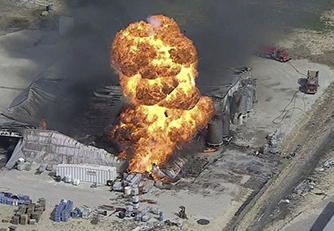The growing trend of governments around the world introducing presumptive legislation to provide compensation to chronically ill firefighters is a welcome development for those needing treatment and their families.
However, presumptive legislation only deals with the problem after it’s too late. It does not address the core issue of better managing preventative maintenance and decontamination of PPE/PPC to reduce, or even eliminate exposure.
Background
There is an increasing level of recognition around the world that firefighters are being exposed to particulate and other contaminants with a clear direct link to a number of chronic illnesses, including some cancers.
Various studies have shown a high level of probability that particulate can collect on firefighting PPE causing the user repeated exposure to harmful contaminants.
Further Reading
Firefighter research shows PPE exposure risk, Stull, Jeffery & Stull, Grace.
QFES Firefighter Exposure Study, QFES Research & Scientific Branch
Cardiovascular & Chemical Exposure Risks in Modern Firefighting, Illinois Fire Service Institute, University of Illinois
What is Presumptive Legislation?
The presumptive legislation that has been introduced in the majority of states and territories of Australia (as well as parts of the USA, Canada, and Europe), reverses the onus of proof so that firefighters who have been diagnosed with certain conditions no longer have to demonstrate that they contracted the condition during the course of their work to access compensation. As long as they meet certain criteria, such as length of service, it is presumed that they developed the condition due to exposure while performing their duties.
The Key Issue: Reducing Exposure Without An Explosion of Expenses
Presumptive legislation is certainly helpful to those who have developed a condition, however, the preferable course of action is to work towards reducing exposure in the first place.
The studies that have identified the problem of repeated exposure, mostly recommend changes to fire ground management of contaminated PPE and more frequent laundering. It is the latter that presents a challenge for organisations managing their PPE stock.
More frequent laundering not only creates an increase in laundering costs, it dramatically reduces the effective lifespan of PPE creating an increase in replacement costs. While you can’t put a price on the health and well-being of workers, it is necessary for organisations to start looking beyond traditional laundering and look far more closely at ways to more efficiently decontaminate and manage their PPE/PPC stock.
Here is an excerpt from an IDS presentation to a state fire authority that effectively describes the dilemma:
“IDS has been working with various fire services for 10 years. In that time, the average number of washes per garment in circulation has increased from .8 times per annum in 2010, to 1.8 times per annum in 2013 to around 3.2 times per annum currently. While this increase is helpful in addressing the contamination issue, at 3.2 times per annum fire fighters are still only laundering their PPE after every 10-15 fire exposures (based on indicative numbers of fires fought on average per annum).
In other words, if we were to launder after every fire exposure, fire services’ laundry frequency would increase tenfold or more.
An additional factor is the determination of the expected life of a garment. How long should a structural ensemble last?
Most manufacturers are providing around 5-year warranties which is based upon the garments being washed 5 times per annum for a total of 25 washes. Many manufacturers are also advocating having a maximum number of wash cycles before a garment should be replaced. This thinking is all based around the laundry results of existing commercial laundry processes. Our own laundry trials have clearly shown that structural fire garments can be damaged to the point that they no longer provide protection in a live fire situation after only 12 washes in a commercial laundry. The best commercial process we have identified can launder a garment around 27 washes before it is damaged.
On this basis if we wash garments after every fire using a commercial wash process, then garments will need to be replaced every 6-8 months.”
There are also a couple of further complications presented by going down the path of simply ‘washing more often’ using traditional commercial laundering techniques:
- In Australia, standards suggest that laundries use a minimum wash temperature of 74°C for sanitisation. However, most manufacturers of PPE/PPC specify maximum wash temperatures that are generally under 48°C to avoid damaging the item (this is consistent with testing we have done here at IDS).
- More frequently laundering logically means that more PPE will be in transit or at the laundry at any given time meaning a necessity to carry higher stock levels to ensure availability.
Summary
Over the last twenty years, there has been a growing recognition that the hazards faced by firefighters are not always immediate and clearly visible.
Many are microscopic and insidious.
This in turn has created a greater awareness that PPE Is not 100% impervious and much more attention is required when it comes to effective decontamination and maintenance of PPE.
However, at IDS we believe the answer is not simply more frequent laundering. Much smarter thinking is required around decontamination processes and managing stock to prevent exorbitant cost blowouts while still effectively protecting our firefighters.


